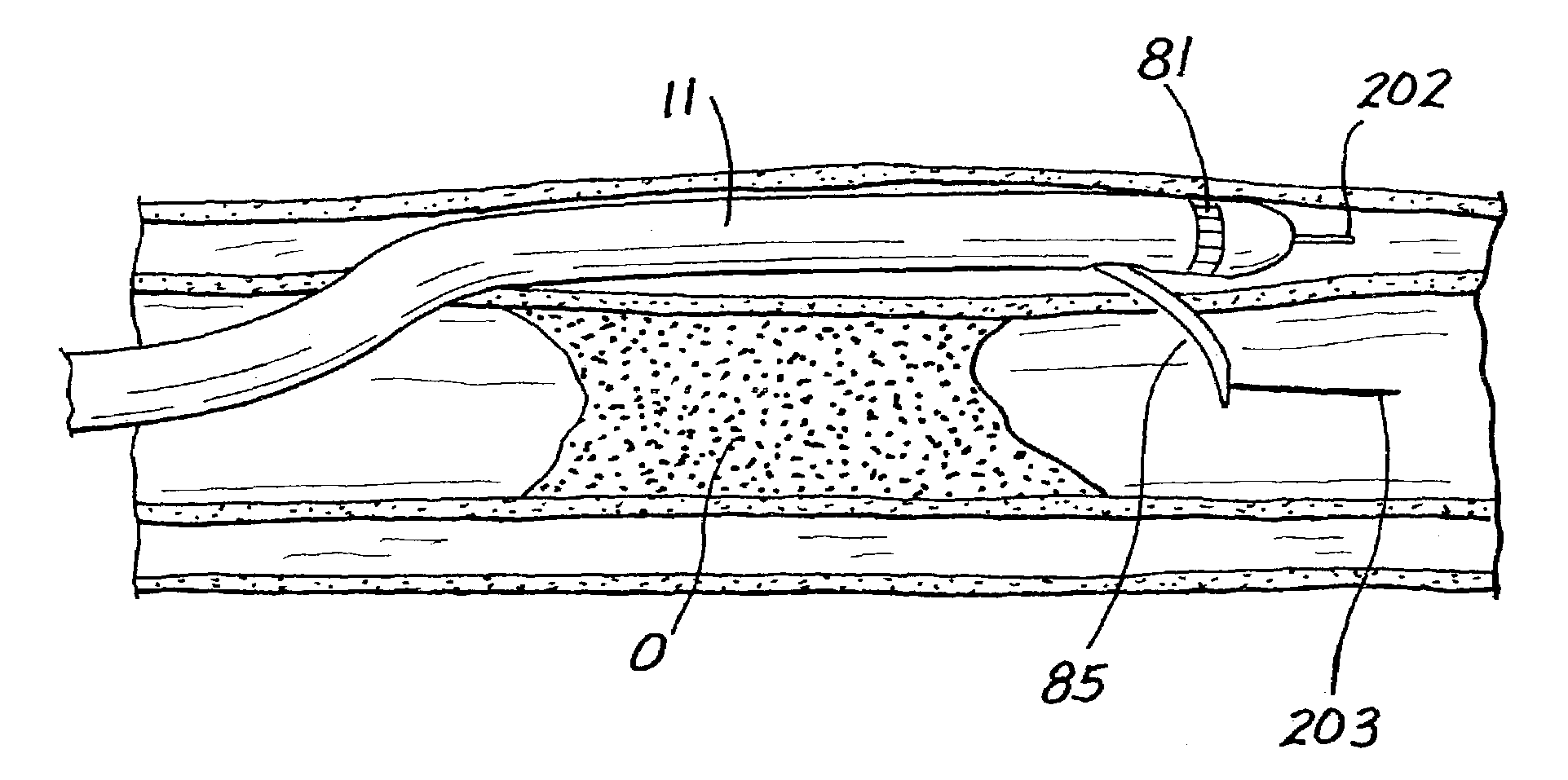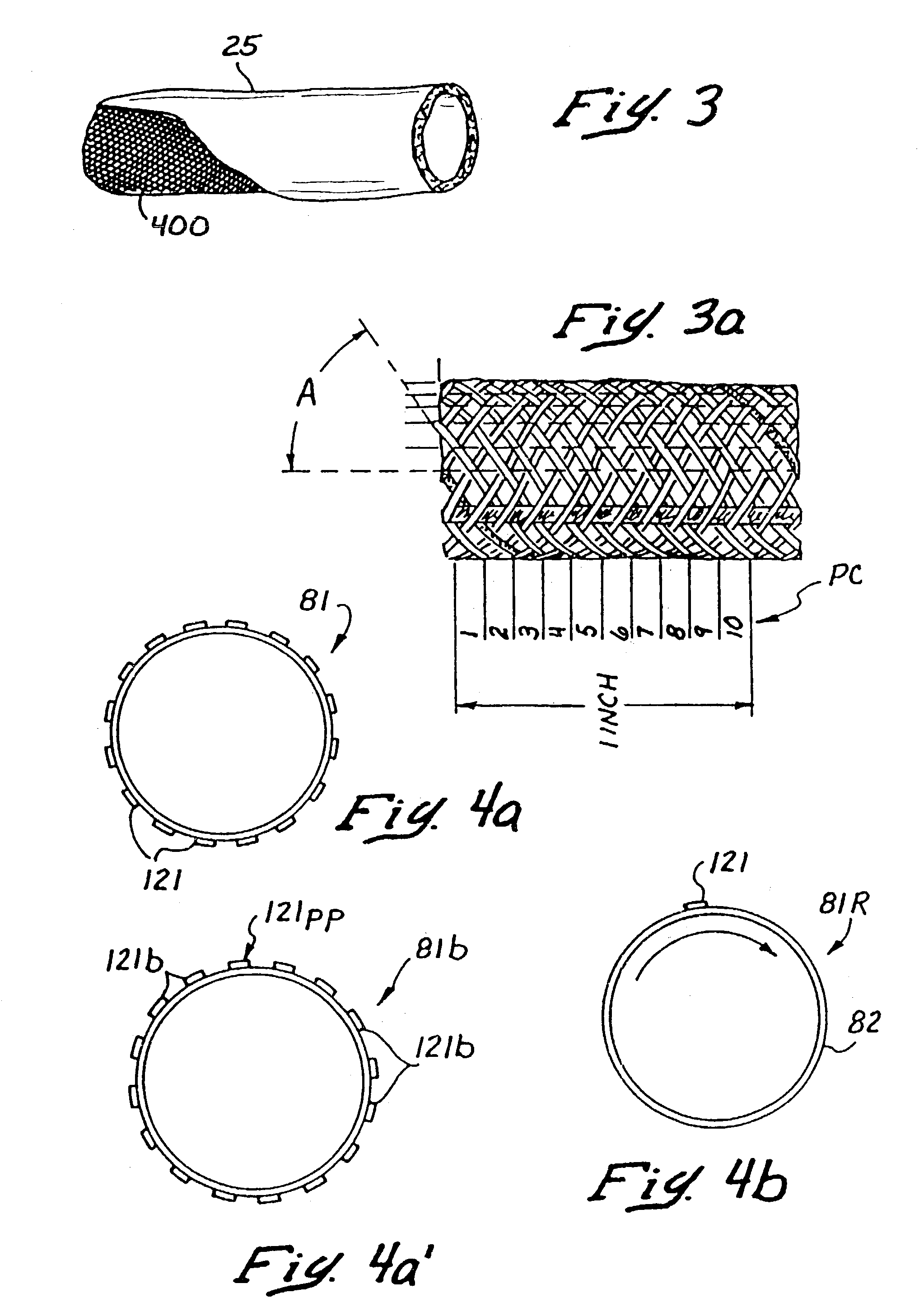Methods for bypassing total or near-total obstructions in arteries or other anatomical conduits
a technology of total or near total obstruction and anatomical conduit, which is applied in the direction of prosthesis, catheter, surgical staples, etc., can solve the problem of difficult reentry of the guidewire into the artery lumen
- Summary
- Abstract
- Description
- Claims
- Application Information
AI Technical Summary
Benefits of technology
Problems solved by technology
Method used
Image
Examples
Embodiment Construction
[0023]The following detailed description, and the drawings to which it refers, are provided for the purpose of describing and illustrating certain examples or embodiments of the invention only and are not intended to exhaustively describe or show all possible embodiments or examples of the invention.
[0024]A. The Penetrating Catheter:
[0025]FIG. 2 shows a penetration catheter 11 that is equipped for precise rotational orientation and aiming of its penetrator 85, in accordance with the teachings of this invention, while FIG. 1 shows the catheter 11 in use on a human patient. In the embodiment illustrated, the catheter 11 includes an elongated catheter body 13 having a proximal end 15, a distal end 17, a handle 19 and a hub 21 coupled to the proximal end of the catheter body 15 and to the handle. The handle 19 may also serve as a controller for use in advancing and retracting the penetrating instrument, such as a tissue penetrator 85 described more fully below.[0026]The Catheter Body
[00...
PUM
 Login to View More
Login to View More Abstract
Description
Claims
Application Information
 Login to View More
Login to View More - R&D
- Intellectual Property
- Life Sciences
- Materials
- Tech Scout
- Unparalleled Data Quality
- Higher Quality Content
- 60% Fewer Hallucinations
Browse by: Latest US Patents, China's latest patents, Technical Efficacy Thesaurus, Application Domain, Technology Topic, Popular Technical Reports.
© 2025 PatSnap. All rights reserved.Legal|Privacy policy|Modern Slavery Act Transparency Statement|Sitemap|About US| Contact US: help@patsnap.com



